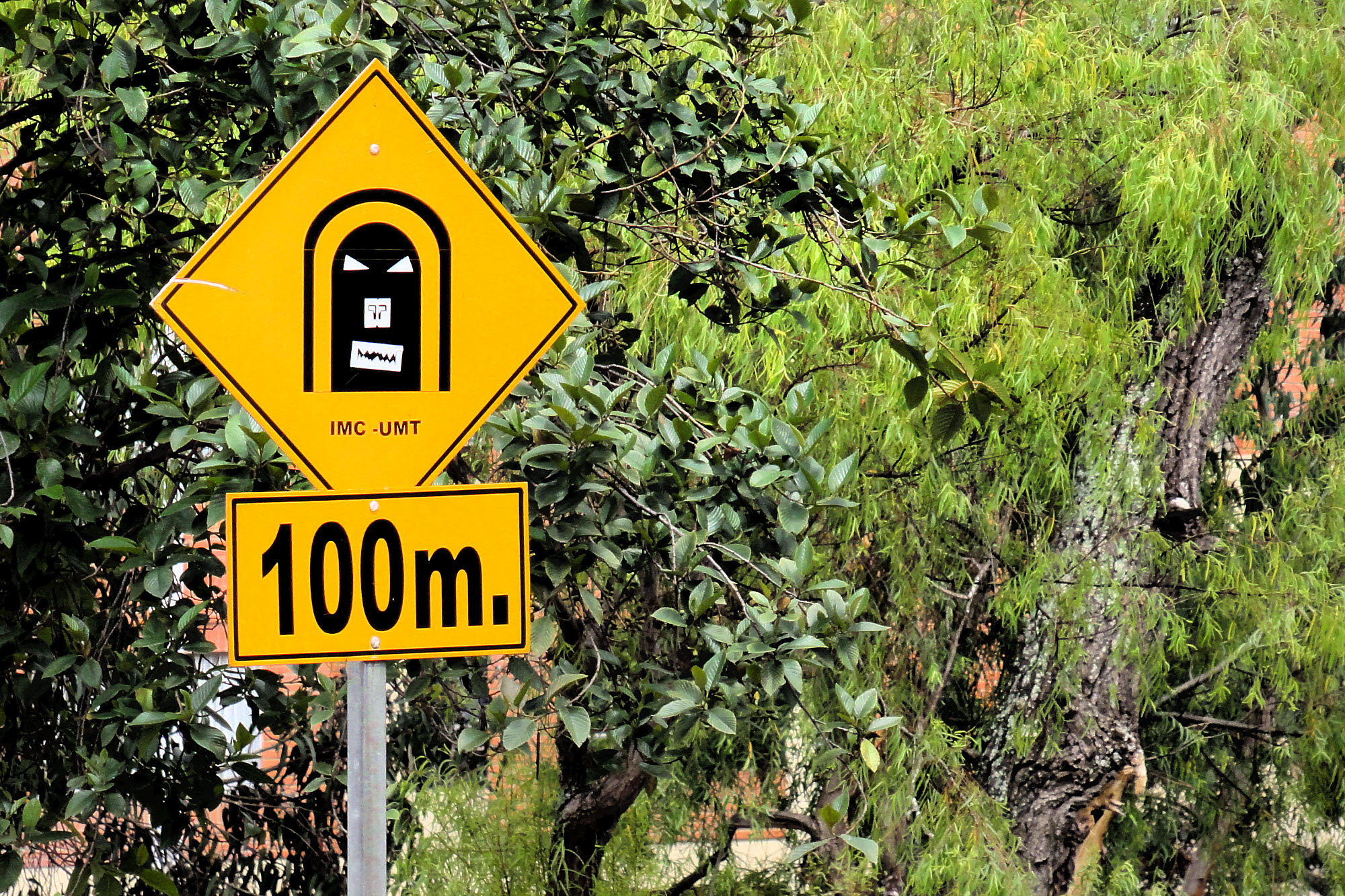
A fat, stubby and sturdy post that provides a small safety buffer between an area of high and fast traffic (like a street full of cars) and one of low and slow traffic (like a sidewalk full of pedestrians).
Bollards are typically placed near corners at intersections or where a trail or walkway meets a road.
You can also find them on high-traffic trails, where troops of thru-hikers in colorful spandex outfits roar past, four or six abreast in competitive attempts to set new cross-continent land speed records.
This is a relatively new development, and few trails have yet been upgraded with the latest safety features.
The better trails, though few in number, have divided lanes, designated rest stops and parking areas, on and off ramps, overpasses, and passing zones.
The unwary weekend hiking yokel, ignorant of the recent desperate developments in the sport, may inadvertently stroll out into traffic on a high-intensity but unimproved trail and get flattened without warning.
Bollards separating recreational-level side trails from professional trails are a good first step (and a warning to duffers) but by no means sufficient.
Hiker beware!

Remember: It could be that the purpose of your life may only be to serve as a warning to others. (Thanks to Despair.com for this eternal wisdom.)
Have something to add? Send email to sosayseff@gmail.com
See if that helps.